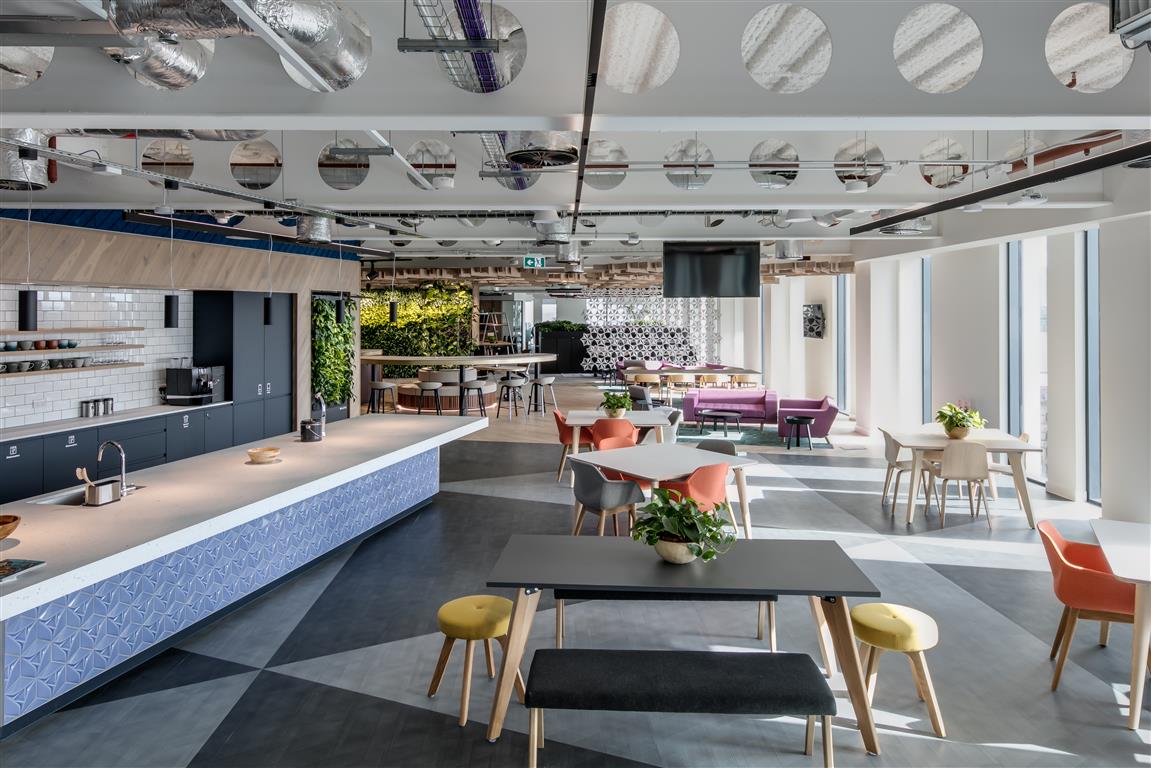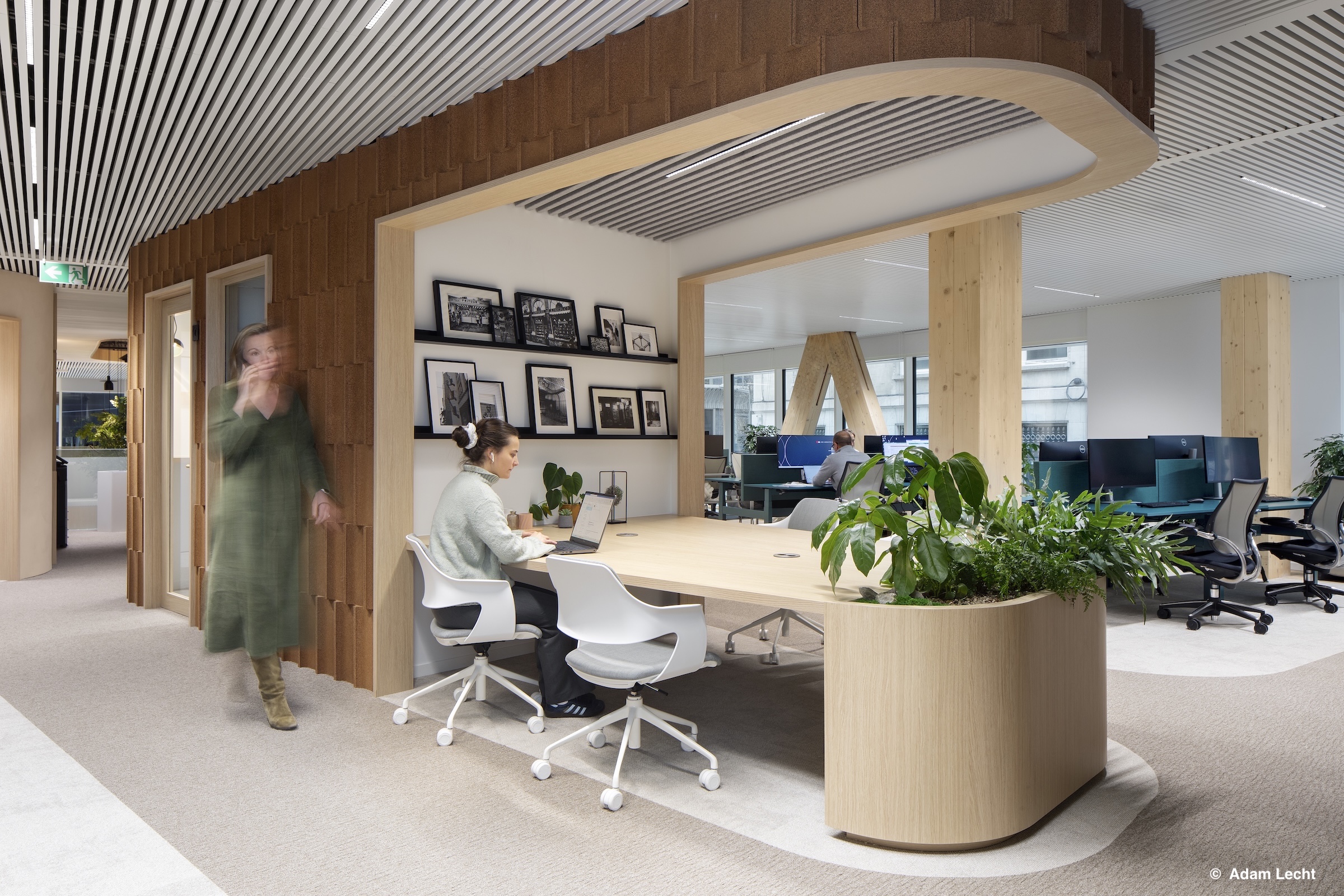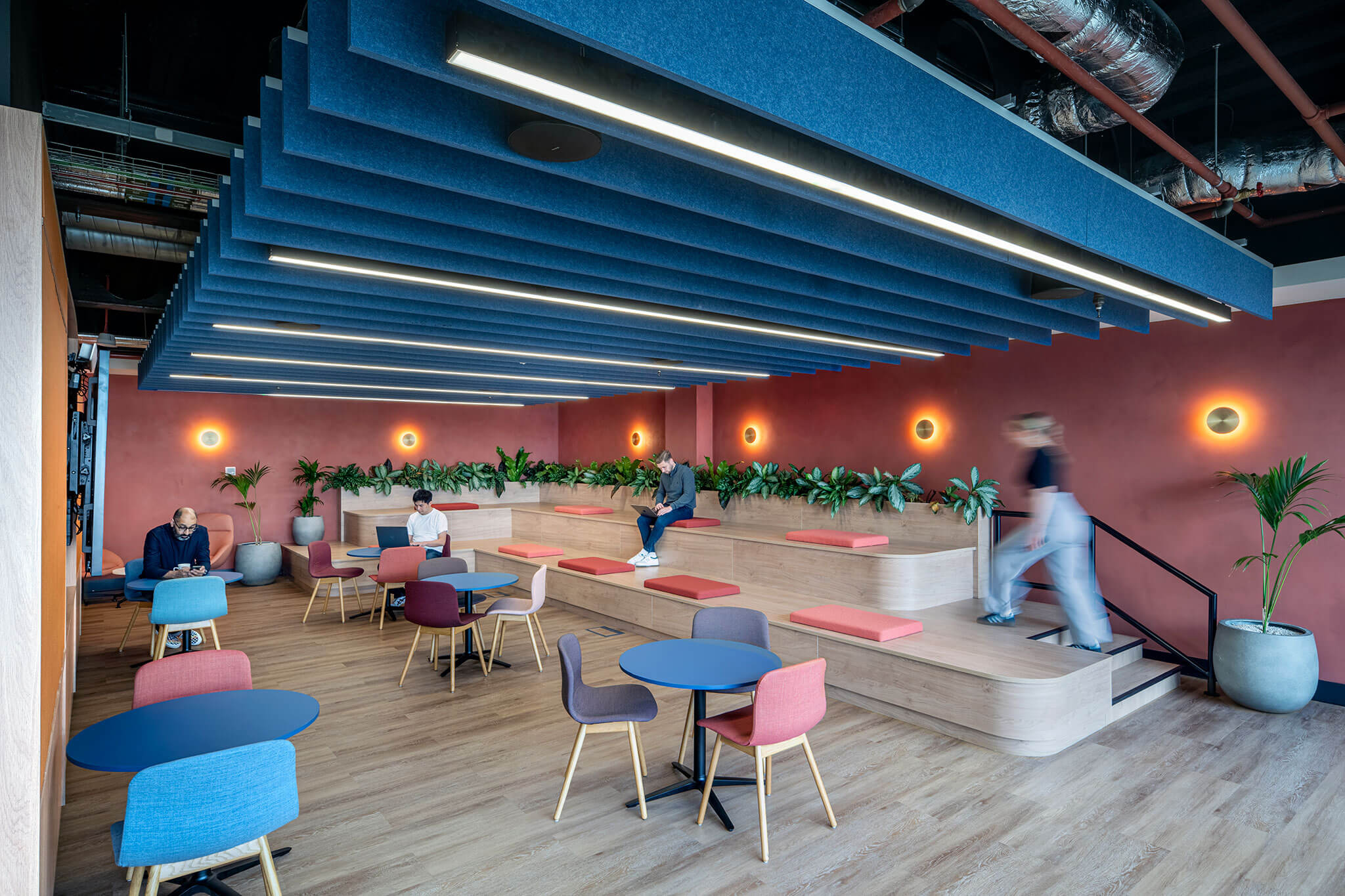With sustainability high on the corporate agenda, companies are increasingly taking steps to develop indoor spaces that are not only better for their people, but also for the planet. From a design perspective, there are a number of strategies to reduce a company’s carbon footprint:
Low energy
Maximising on natural light through space planning and design means less artificial lighting. Where needed, efficient LED lights can be installed with sensors and light switches in meeting rooms and cellular offices mean the lights can be turned off when the rooms are not in use.
In addition to reducing glare, functional window treatments can reduce heat insulate a space to lower HVAC requirements.
Low waste
Reducing and reusing in an interior fit-out can take many forms, for example, specifying demountable partitions that can be re-used when an office is refurbished; upcycling furniture; using carpets and vinyl flooring made from recycled materials; installing innovative products like countertops made from recycled plastics; and selecting furniture with a low carbon footprint are all strategies to reduce waste.
Bringing nature in
While we all know that plants are good for wellbeing in the workplace, they can also serve as a more sustainable alternative to elements such as dividing screens, reducing inorganic waste. Sustainably produced natural materials such as timber and cork make for an aesthetically pleasing option for shopfitting, flooring and furniture.
These are just a few of the ways a company can reduce its impact on the environment when considering a new office fit-out or refurbishment.

Find out more about how Tétris can help make your office fit-out more sustainable.



